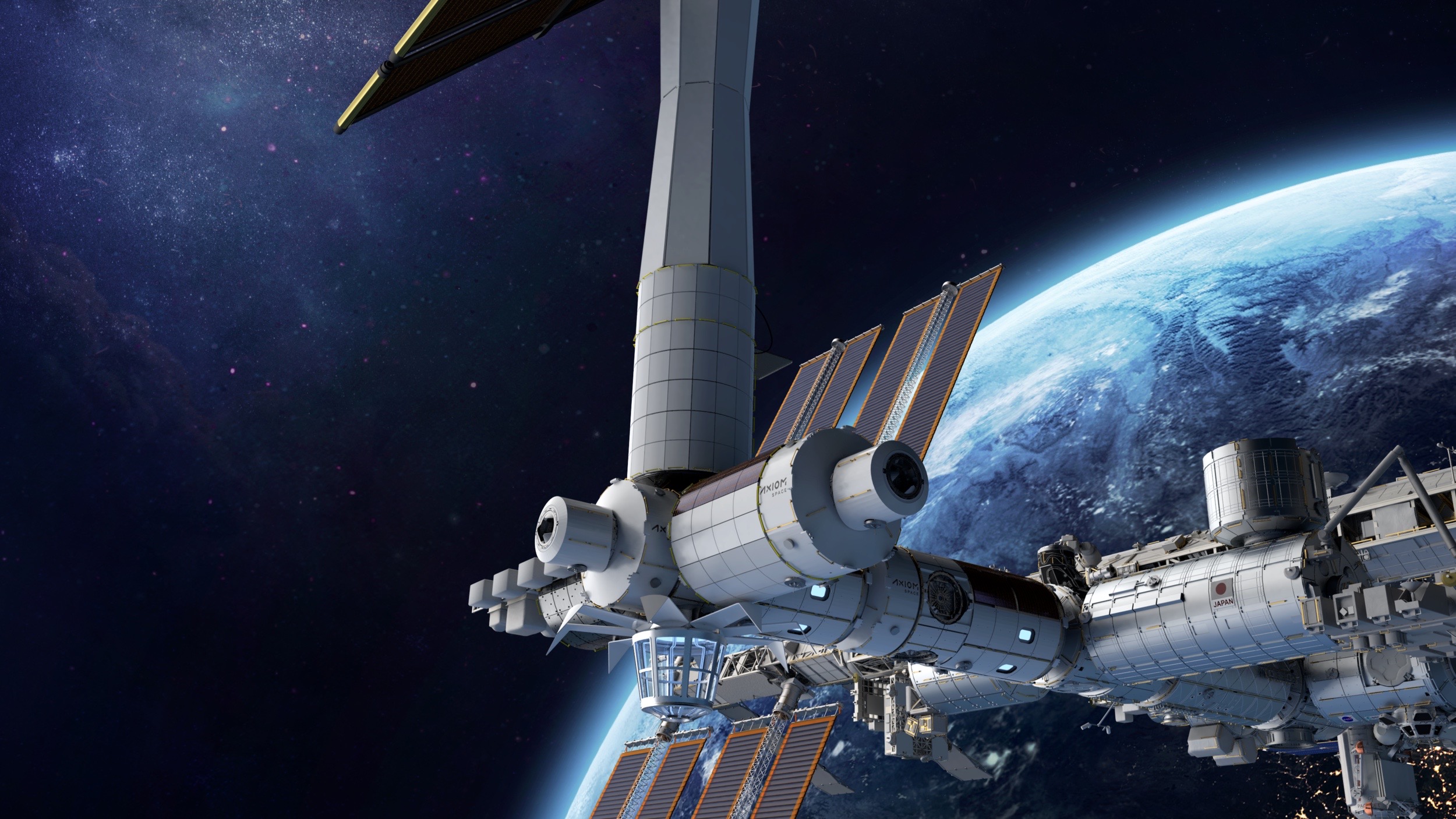
Private space stations may end up being a key stepping stone on humanity's path to Mars.
NASA aims to put astronauts on the moon in this decade and on the Red Planet in the 2030s. To help make these ambitious goals a reality, the agency is performing lots of research aboard the International Space Station (ISS) — monitoring astronaut health, behavior and performance on year-long orbital missions, for example, to better understand the effects of long-duration spaceflight on the human body and mind.
But the venerable ISS, which is 23 years old and has hosted rotating astronaut crews continuously since November 2000, may not be around long enough to see this work through, according to a new report by the NASA Office of Inspector General (OIG).
Related: Building the International Space Station (photos)
"Under the Agency's [NASA's] current plans, both health risk mitigation and technology demonstrations will not be complete by 2030 — the expected retirement date of the ISS," states the 41-page report, which was released on Tuesday (Nov. 30). (The ISS is officially approved to operate only through 2024, but "an extension to 2030 is likely," the report notes.)
This outcome would not take NASA by surprise. The agency is encouraging the development of private space stations to fill any orbital research gaps that may arise, with the goal of having at least one such commercial outpost up and running by 2028. And its work toward this end has been productive, according to the report.
"We found that the Agency's near-term actions show promise, with NASA's recent efforts resulting in market interest and growth, especially for private astronaut missions," the report states.
Get the Space.com Newsletter
Breaking space news, the latest updates on rocket launches, skywatching events and more!
Private space station missions and modules
For example, the Houston company Axiom Space plans to fly four private crewed missions to the ISS aboard SpaceX Crew Dragon capsules in the next two years. The first of those flights is right around the corner, with launch targeted for February 2022. The company has tapped veteran NASA astronauts to command the first two of those flights and may do so for the others as well.
Axiom also aims to launch a commercial module to the ISS in September 2024, then send three more modules up over the next three years.
"With the delivery of the fourth module, Axiom Station will have the capability to be independent of the ISS and can then separate to become an independent, next-generation space station with upgraded crew quarters, increased payload capacity and a dedicated manufacturing and research lab module," Axiom Chief Technology Officer Matt Ondler told Space.com via email recently.
"This timeline supports the current planned end of ISS life, so there should be a seamless transition with no gaps in human continuous presence in LEO [low Earth orbit]," Ondler added.
A space station shows its age
The OIG report is less sanguine about timelines, stating that NASA "faces significant challenges with executing its commercialization plan by 2028 or even 2030 — meaning that without further extension of the ISS, a gap in availability of a low Earth orbit destination is likely."
Those challenges "include limited market demand, inadequate funding, unreliable cost estimates and still-evolving requirements," the report adds. It also notes that risks will rise for crewed missions to deep-space destinations such as the moon and Mars if NASA cannot finish its prep work in LEO.
"Furthermore, without a destination, the nascent low Earth orbit commercial space economy would likely collapse, with cascading impacts to commercial space transportation capabilities, in-space manufacturing, and microgravity research," the report states.
The new report touches on a number of other issues as well. For example, its researchers investigated the space station's structural integrity, an issue that received increased attention recently after the discovery of several cracks in Russia's Zvezda module, which launched to orbit in July 2000.
The report recommends that Kathy Lueders, the head of NASA's Space Operations Mission Directorate, make sure that the risks associated with the Zvezda cracks "are identified and mitigated prior to agreeing to an ISS life extension."
In a written response included in the report, Lueders states that NASA "partially concurs" with the recommendation. The agency agrees that finishing risk-assessment work on the cracks is essential, as are the Russian federal space agency's efforts to find and fix them. But NASA does not agree that such work must be completed before an ISS life extension can be granted, Lueders writes.
Research for the new report, which is called "NASA's Management of the International Space Station and Efforts to Commercialize Low Earth Orbit," was performed from November 2020 to October 2021, OIG officials said. You can read the full report for free here.
Mike Wall is the author of "Out There" (Grand Central Publishing, 2018; illustrated by Karl Tate), a book about the search for alien life. Follow him on Twitter @michaeldwall. Follow us on Twitter @Spacedotcom or on Facebook.
Join our Space Forums to keep talking space on the latest missions, night sky and more! And if you have a news tip, correction or comment, let us know at: community@space.com.

Michael Wall is a Senior Space Writer with Space.com and joined the team in 2010. He primarily covers exoplanets, spaceflight and military space, but has been known to dabble in the space art beat. His book about the search for alien life, "Out There," was published on Nov. 13, 2018. Before becoming a science writer, Michael worked as a herpetologist and wildlife biologist. He has a Ph.D. in evolutionary biology from the University of Sydney, Australia, a bachelor's degree from the University of Arizona, and a graduate certificate in science writing from the University of California, Santa Cruz. To find out what his latest project is, you can follow Michael on Twitter.









